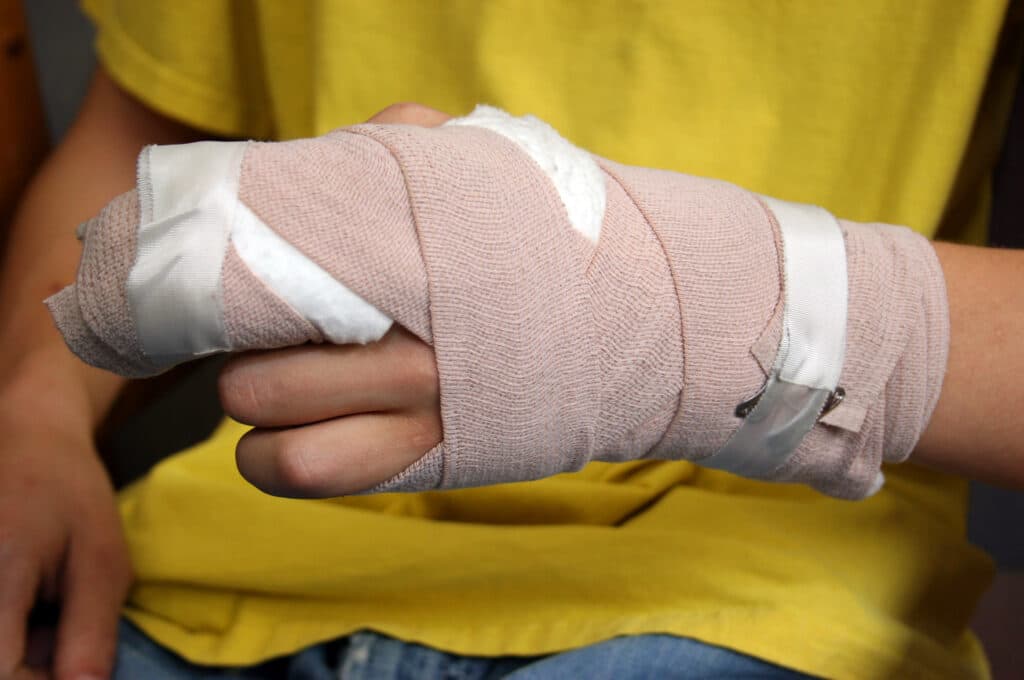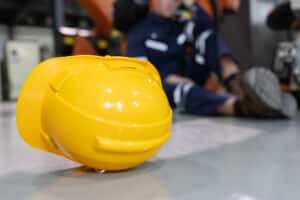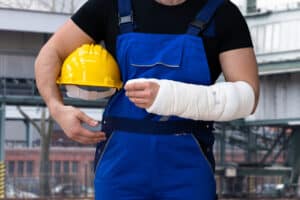
The Washington State Department of Labor and Industries accepts around 90,000 workers’ compensation claims a year. While you should always report an industrial injury to your employer and L&I, some workplace injuries occur much more frequently than others. Here is our list of the most common workplace injuries, according to the most recent data.
Injury vs. Accident
Keep in mind the difference between workplace injuries and accidents. While an accident is an event, an injury is the cause for your taking time away from regular duties, whether it be work with restrictions or medical leave. A claim can have multiple injuries, but only one accident. Of over 300 types of workplace accidents, these are the top 10 most common:
10. Intracranial injuries of cranial region, including skull
This refers to an injury within the skull caused by a force outside the skull, also known as a traumatic brain injury (TBI). The workers’ compensation code for this injury refers specifically to a non-penetrating or closed TBI. Falls, collisions, and other forceful movements of the head are all accidents that can result in these kinds of injuries. Such accidents were listed among the most commonly reported in recent years. Not every blow to the head will result in a TBI, and its effects can be delayed. It is important to know how to identify the symptoms of a brain injury, which can manifest both physically and cognitively.
9. Traumatic injuries to muscles, tendons, ligaments, joints, etc. of ankle(s)
All sorts of accidents can lead to ankle injuries, from falls and falling objects to an industrial disease such as overuse. Injuries to the muscles and tendons of the ankle are called strains, while damage to ligaments and the joint capsule are called sprains. The distinction between the two is key in an L&I claim. Because the different parts of the ankle perform different functions, they can require very different treatments; a longer recovery means more time away from work, and more potential time-loss for an injured worker. All ankle injuries will benefit from the RICE principle, which stands for rest, ice, compression, and elevation.
8. Traumatic injuries to muscles, tendons, ligaments, joints, etc. of multiple body parts
As the name suggests, this injury is assigned to workers who have injured more than a singular body part. Traumatic injury usually refers to sudden and severe injury, often resulting in shock and resulting in an extended recovery. Common causes for injury to multiple parts of the body include motor vehicle accidents, falls, or collisions.
7. Open wounds of hand(s), except finger(s)
Cuts, scrapes, abrasions, or lacerations to the back or palm of a hand are less common than hand injuries that include the fingers, but they can be very dangerous. In 2022, about 50% of accepted open wound claims were filed by freight workers; most other open wound claims were from laborers in similar fields. These exact kinds of wounds can be caused by power tools or carelessly placed objects, such as razors or nails.
6. Surface wounds and bruises of face
A surface wound is visible cuts, scrapes, or bruises on the outermost layers of the skin. Being superficial, these injuries are not usually severe nor require professional treatment. However, they can be quite painful. Surface wounds are caused by blunt trauma or friction, such as being struck by an object or sliding on a rough surface. Injuries to the face can take some time to heal, but they are not normally indicative of an underlying issue or injury.
5. Multiple traumatic injuries and disorders of multiple body parts
It may come as no surprise that injuries to multiple parts of the body — also known as polytrauma — make the top 5 injuries accepted by L&I. Just as it sounds, this kind of injury can, but doesn’t always, affect the whole body.
Accidents that result in these types of injuries and disorders are usually caused by serious incidents, like vehicular crashes or falls, but can also result from repetitive full- or half-body tasks, such as bending and lifting. Polytrauma can have life-long effects that may lead to further health conditions or disabilities.
4. Traumatic injuries to muscles, tendons, ligaments, joints, etc. of leg(s)
Less focused than ankle injuries, sprains, strains, and dislocations of the leg can include injury to the hip and knee, as well as the soft tissue on the femur, tibia, and fibula bones. Many laborers work on their feet and move frequently throughout their day. This can lead to industrial diseases like overuse, but it also means that accidents involving a worker’s legs are more likely.
3. Traumatic injuries to muscles, tendons, ligaments, joints, etc. of shoulder, including clavicle, scapula
Common among workers who spend time lifting heavy objects, shoulder injuries include rotator cuff tears, overuse, and arthritis. Small and imperceptible injuries to the shoulders can build up over time, leading to an industrial disease claim. However, traumatic shoulder injuries can also be the result of high-energy trauma and can include dislocations and fractures.
2. Traumatic injuries to muscles, tendons, ligaments, joints, etc. of back, including spine, spinal cord
Overall, car accidents and falls are the leading cause of these kind of injuries. Jobs that see most of these injuries include factory and line workers, nurses, and truck drivers. Traumatic accidents are not the only cause of spinal injury claims. Poor posture is a leading cause of spinal trauma, which is seen across all fields.
1. Open wounds of finger(s), fingernail(s)
It’s unsurprising that finger wounds are the most common injury accepted by L&I. The vast majority of work injury claims are from laborers in different fields, from farmers to first-line supervisors. Most laborers use their hands for their work. Not only are most of our nerves in our fingers, making an injury to the digits and their nails very painful, but we also collect millions of germs on our hands just by performing our most routine job tasks. It is crucial that you clean your hands frequently so as not to further an injury to your fingers.
In recent years, respiratory and viral diseases have made their way to just under the top 10. If the trend continues, we might see it reach a high average and take a spot as one of the most common work injuries.
What you can do to avoid a work injury
- Wear personal protective equipment (PPE).
- Practice proper hygiene.
- Wear a mask, especially when you are in a crowded space.
- Verify that all tools are in proper condition.
- Use tools for their intended purpose.
- Secure all loads on vehicles or shelves.
- Know your limits.
- Be aware of your surroundings and any hazards on the work site.
- Do not walk under heavy loads.
- Ensure that all substances are properly labeled.
- Abide by OSHA regulations.
- Talk to your employer about possible accommodations.
- Never approach an animal you don’t know.
You can be injured at any time. While you can take steps to prevent an injury, there is no way to guarantee you won’t get hurt. No matter the seriousness of the injury, you deserve compensation for your trauma, treatment, and time away from work. An experienced L&I attorney who understands the system can help you get the proper compensation and treatment for your injury.




